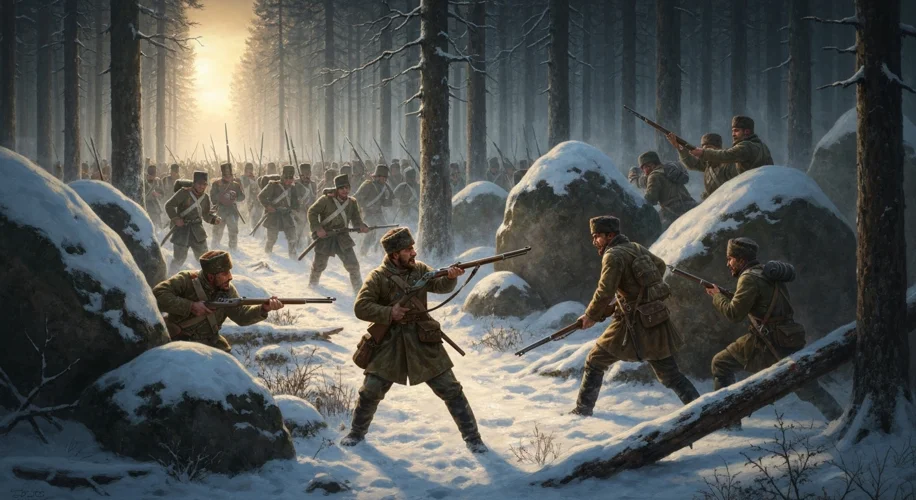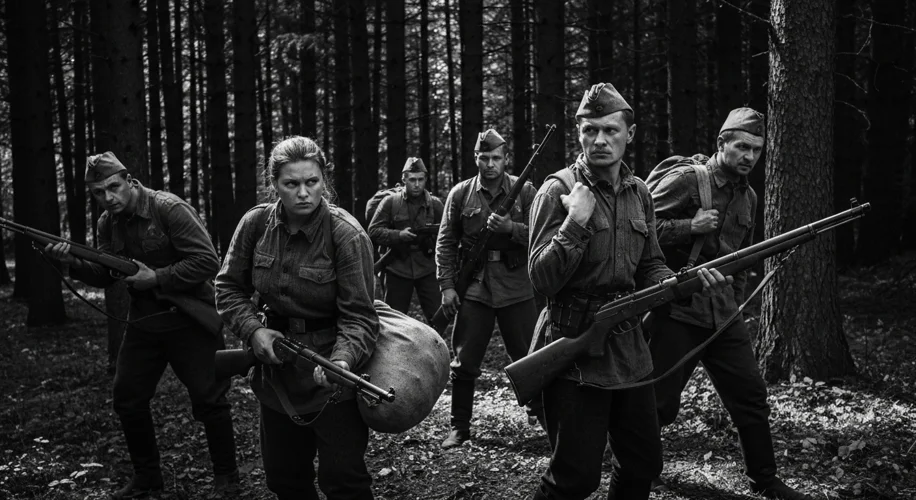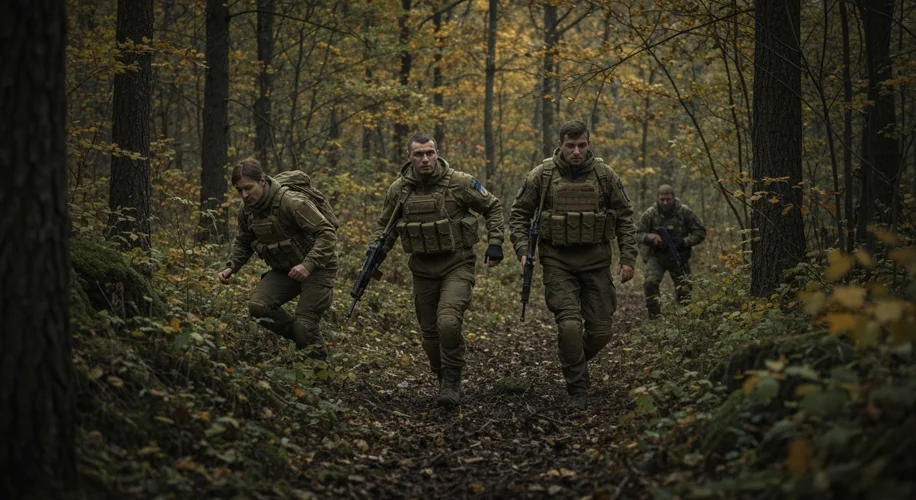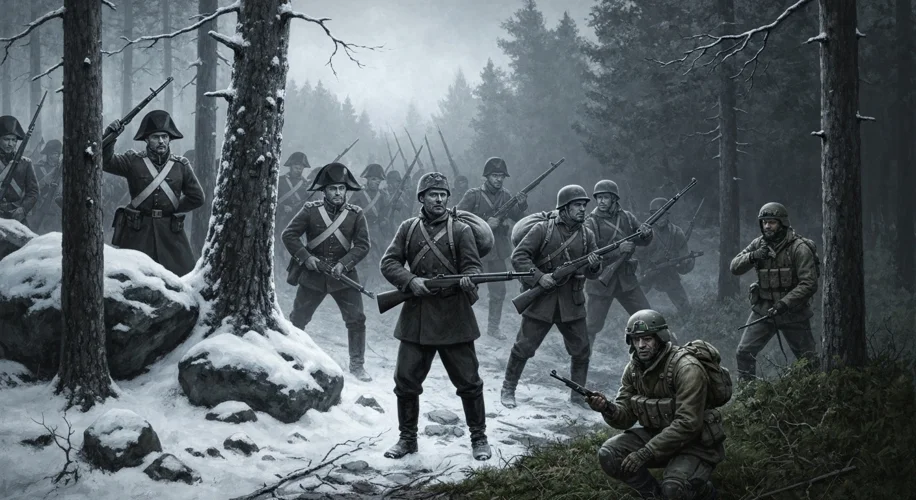The chilling whistle of a falling mortar round, the crackle of unseen gunfire in a snow-laden forest, the furtive exchange of intelligence in a darkened barn – these are the whispers of partisan warfare, a brutal and enduring aspect of Russian and Ukrainian history. Far from the grand pronouncements of generals and the polished boots of invading armies, these hidden conflicts have repeatedly shaped the destiny of these lands, their echoes resonating even in today’s turbulent headlines.
Imagine the year is 1812. Napoleon’s Grande Armée, a seemingly invincible force, marches deep into Russia. But as the French columns push forward, they are not just met by the Tsar’s dwindling regular army. In the vast, unforgiving Russian wilderness, peasants, woodsmen, and even disaffected soldiers begin to melt into the landscape, emerging as a phantom enemy. These were the first stirrings of a partisan spirit that would plague invaders for centuries. They sabotaged supply lines, ambushed stragglers, and provided crucial intelligence to Russian commanders. Denis Davydov, a poet and soldier, became a legendary partisan leader, his daring raids striking fear into the hearts of the French.

Fast forward to World War II, and the partisan fight intensified, evolving into a full-blown ideological struggle. As Nazi Germany’s war machine rolled across Soviet territory, it encountered a ferocity born of desperation and patriotism. The Soviet Union actively encouraged and organized partisan movements in the occupied rear areas. These were not just ragtag groups; they were trained, armed, and often deeply ideologically motivated. They operated in vast forests and swamps, transforming occupied territories into a dangerous quagmire for the Wehrmacht. Sabotage of railways, destruction of communication lines, and assassinations of Nazi officials became their daily bread. Stories abound of women partisans, like Zoya Kosmodemyanskaya, who endured horrific torture before her execution, becoming a martyr for the Soviet cause.
In Ukraine, the partisan experience was even more complex. While many fought against the Nazi occupation, the historical landscape was fractured by the legacy of Soviet rule and pre-war purges. The Organization of Ukrainian Nationalists (OUN) and its military wing, the Ukrainian Insurgent Army (UPA), fought against both the Nazis and, at times, the Soviets. Their fight was for an independent Ukraine, a dream that often placed them in opposition to larger, more established powers. This complicated history, where resistance against one occupier could be seen as collaboration with another, adds layers of tragedy and moral ambiguity to the narrative of partisan warfare.

Consider the sheer audacity of these actions. A small band of partisans, armed with limited resources and facing a technologically superior enemy, could tie down thousands of enemy troops. They disrupted logistics, sowed terror, and, crucially, maintained a flickering flame of resistance when conventional armies were on the defensive. This was particularly vital during the early, desperate days of invasions, when regular forces were often in full retreat. The partisans kept the spirit of defiance alive, providing hope and a vital intelligence network.
But partisan warfare was not just about large-scale sabotage. It was also intensely personal. It was the farmer who hid a downed pilot, the village elder who passed coded messages, the teenager who became a scout, risking everything with every whispered word. These individuals, often overlooked in grand historical accounts, were the lifeblood of the resistance. Their bravery, their sacrifices, and their deep connection to their homeland fueled a war waged in the shadows.
The consequences of partisan warfare are profound and multifaceted. For the occupying forces, it meant a constant drain on resources, a perpetual state of alert, and a gnawing uncertainty. The enemy was everywhere and nowhere. It fostered a climate of fear and brutality, often leading to brutal reprisge actions against civilian populations, further fueling the cycle of violence. For the partisan fighters and their communities, it meant immense hardship, constant danger, and the ever-present threat of discovery and brutal reprisal.
In the aftermath of conflicts, partisan movements often left a complicated legacy. In the Soviet Union, partisan heroes were celebrated, their stories woven into the fabric of national identity. In Ukraine, the legacy is more contentious, with differing perspectives on the OUN and UPA reflecting the nation’s complex historical trajectory. Regardless of political interpretation, the impact of partisan warfare on the social and political landscape of both nations is undeniable.
Today, as we witness conflicts that involve unconventional warfare and resistance movements, the echoes of Russia’s and Ukraine’s partisan past become eerily relevant. The history of these hidden fighters serves as a potent reminder that even in the face of overwhelming military might, the human spirit’s capacity for resistance, fueled by love of homeland and a fierce desire for freedom, can shape the course of history in unexpected and enduring ways.


